10 Minimalist Garden Ideas for Small Urban Spaces
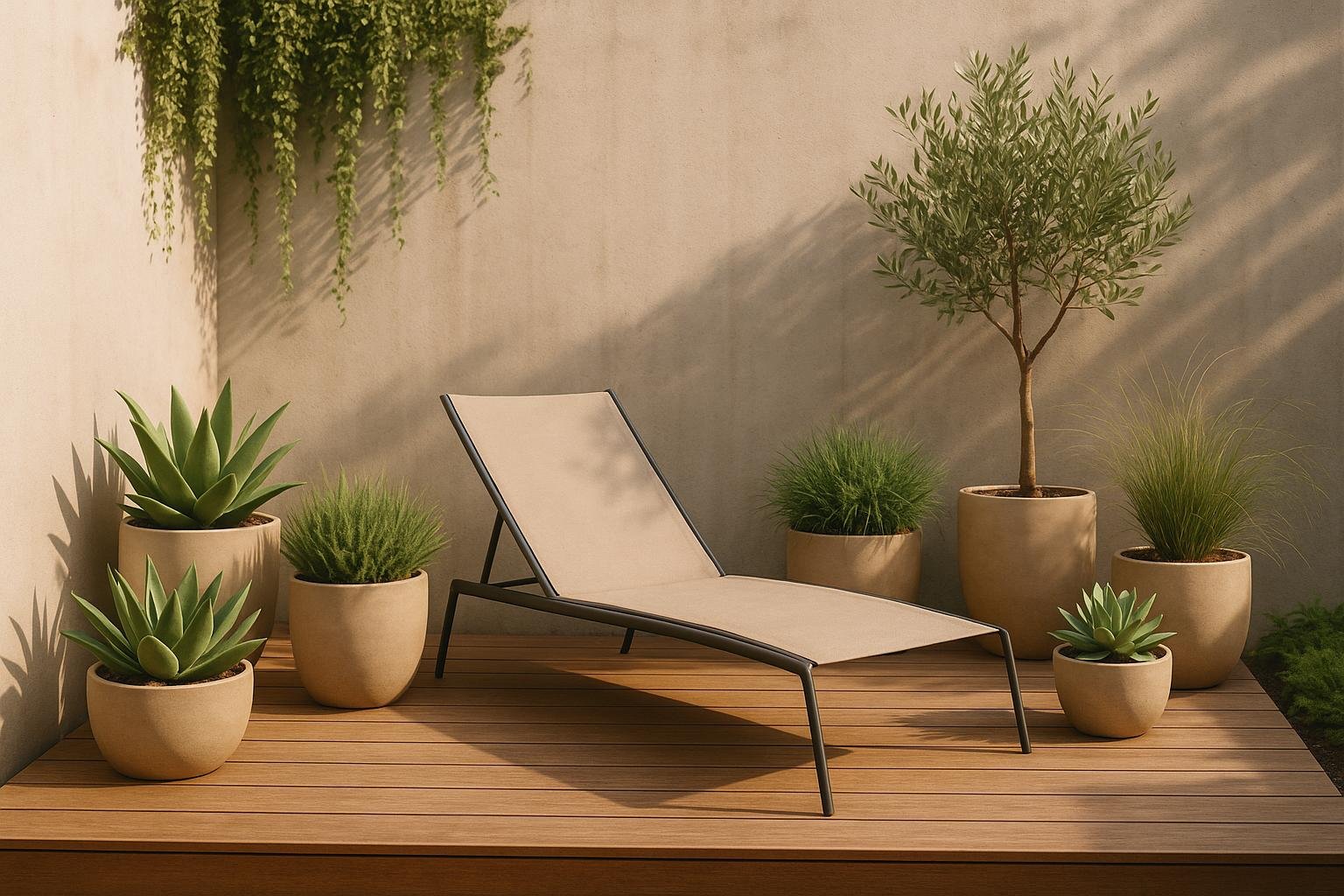
Minimalist gardens thrive on simplicity and smart use of space. Whether you're working with a balcony, courtyard, or small backyard, these ideas will help you design a serene, functional garden:
- Vertical Gardens: Save space by using walls for modular planters or tiered containers.
- Single-Color Plant Palettes: Stick to one color for a clean, cohesive look.
- Modern Containers: Use geometric pots to highlight plants without clutter.
- Courtyard Layouts: Define zones and pathways for an organized feel.
- Bright Colors: Light tones and reflective materials make small spaces look bigger.
- Dual-Purpose Features: Add seating with storage or vertical planters for privacy.
- Herb Gardens: Grow practical kitchen herbs in sleek, portable containers.
- Smart Lighting: Layer ground, mid-height, and overhead lights for ambiance.
- Space-Efficient Beds: Use raised beds with built-in seating or storage.
- Multi-Level Planting: Arrange plants by height to create depth and maximize sunlight.
These ideas combine beauty and practicality, transforming even the smallest areas into peaceful retreats. Use tools like AIGardenPlanner to visualize layouts and pick plants suited to your space and climate.
Minimalist Garden Design Ideas: Simple & Stylish Outdoor Spaces

1. Space-Saving Vertical Gardens
Vertical gardens are a great way to make the most of limited urban spaces while keeping a clean, streamlined design. By using wall space, you can turn empty surfaces into lush, green features that fit perfectly with a minimalist aesthetic. Here's how you can incorporate vertical gardens into your space.
Wall-Mounted Systems
Install modular panels or pocket planters directly onto walls. These are perfect for:
- Herbs like thyme and oregano
- Small ornamental plants
- Trailing plants such as pothos or ivy
Tiered Container Options
Set up weatherproof containers on shelves or plant stands with varying heights. These work well for:
- Small succulents
- Compact flowering plants
- Dwarf vegetable varieties
Tips for Easy Maintenance
Keep your vertical garden thriving with these simple strategies:
- Watering System: Use a drip irrigation system to ensure even watering.
- Plant Compatibility: Select plants that share similar light and water needs.
- Accessibility: Arrange plants so they’re easy to reach for regular care.
For personalized garden plans tailored to your space, preferences, and local climate, check out AIGardenPlanner's Plant Advisor feature.
Design Tips for a Minimalist Look
To maintain a sleek and uncluttered style:
- Stick to 3–4 plant types per wall section.
- Use a consistent color palette or complementary tones.
- Leave intentional gaps between plants to create visual balance.
2. Single-Color Plant Selection
Carefully choosing plants is key to creating a minimalist garden. Sticking to a single-color palette brings a clean and polished look, making it perfect for compact urban spaces.
When picking plants, factor in your local climate and growing conditions. If you need help, tools like AIGardenPlanner's Plant Advisor can analyze your space and preferences. It can suggest plants that fit your design goals and show how a unified color scheme can transform your garden.
🚀 Ready to Reinvent Your Garden?
Join thousands of homeowners who have transformed their gardens using our AI design tool. Upload one photo to explore endless possibilities.
Get your AI garden designs →3. Modern Container Gardens
Modern container gardens are a stylish way to make the most of small urban spaces. By choosing simple geometric containers, you can emphasize the natural beauty of plants while conserving space. This clean, organized style pairs well with digital tools that help create custom designs.
For example, AIGardenPlanner can help you select plants that match your space and design preferences, blending practicality with visual appeal.
4. Small Courtyard Layouts
Use digital tools to plan your courtyard efficiently, ensuring a well-thought-out layout and plant selection. For example, AIGardenPlanner can help you visualize various designs and recommend plants that thrive in your specific climate. By incorporating defined planting zones and clear pathways, you can create a space that feels open and organized, while maintaining a clean, uncluttered look.
5. Bright Color Schemes
Bright colors can make your small garden feel more spacious, adding a sense of depth and openness. To get started, focus on reflective materials for your base.
Use neutral materials like light-colored pavers, gravel, or decking in shades of cream, light gray, or white. These surfaces bounce natural light around, enhancing the airy vibe. Tools like AIGardenPlanner's visualization feature are great for testing out different light-toned materials before committing.
Once you’ve set your base, choose plants that match the light tones. Here are some great options:
- Dusty Miller (Senecio cineraria)
- Silver Sage (Salvia argentea)
- *White Caladium
For a clever trick, place white-flowering plants at the back of your garden. This creates an illusion of depth, making the space seem larger.
Don’t forget your containers! Opt for light-colored ones that complement your scheme, or give your existing pots a fresh coat of bright paint to save money.
To highlight your bright garden features at night, add solar-powered LED lights. Aim them at white flowers or light-colored walls for a striking evening effect.
Finally, balance the brightness with a few darker accents. Adding a couple of deeper-toned plants creates contrast, keeping the space visually interesting without losing its open feel.
sbb-itb-4d6a8dd
6. Dual-Purpose Garden Features
Making the most of a small urban garden requires smart design choices. Adding features that serve multiple purposes helps you save space while keeping the area functional and stylish.
Consider built-in seating with storage. Benches placed along walls or fences with hinged tops can double as seating and hidden storage for gardening tools or supplies.
Take advantage of vertical planters. These can act as privacy screens while showcasing your favorite plants. Tools like AIGardenPlanner let you test different planter layouts to find the right mix of privacy and greenery.
Turn garden walls into functional spaces with modular systems. These can include hanging herb gardens, storage for tools, decorative lighting, or even fold-down tables for added versatility.
Add a water feature to create a calming focal point while also cooling the space on hot days.
Opt for convertible furniture, such as a potting bench with a removable top. It can handle gardening tasks during the day and transform into a serving station for outdoor gatherings. Look for weather-resistant materials to keep maintenance low.
Lastly, use tiered planters as both garden borders and growing spaces. Plant decorative flowers on the top tier and reserve the lower tier for herbs or small vegetables. These smart, space-saving additions are perfect for compact urban gardens.
🎨 Visualize Your Dream Garden Today!
Transform any outdoor space into a professional landscape design in minutes. Just upload a photo, choose your style, and let our AI do the rest.
Start your garden transformation now →7. Kitchen Herb Gardens
Turn small urban spaces into practical herb gardens that enhance both your cooking and your kitchen's look.
Stick to simple, neutral-colored containers like white, gray, or black for a clean and modern vibe. Rectangular planters on windowsills or countertops keep your herbs within easy reach.
Here’s a quick guide to some popular herbs and how to grow and use them:
| Herb Type | Growing Conditions | Common Uses |
|---|---|---|
| Basil | Full sun, 6–8" pot | Italian and Thai dishes |
| Thyme | Partial sun, 4–6" pot | Mediterranean recipes |
| Rosemary | Full sun, 8–10" pot | Roasts and grilling |
| Mint | Partial shade, 6" pot | Cocktails and garnishes |
| Parsley | Partial sun, 6" pot | All-purpose garnish |
Make use of vertical space by installing wall-mounted herb planters. Slim metal or wooden frames can hold individual pots, creating a "living wall" that’s both functional and decorative.
For flexibility, use portable containers so you can move herbs between your kitchen and outdoor areas, keeping them fresh all year long.
To plan your garden, try tools like AIGardenPlanner to design a layout tailored to your space and growing conditions. Group herbs with similar water needs, and consider a drip irrigation system for easy, consistent watering without cluttering your design.
8. Smart Lighting Setup
Light up your garden with thoughtful, minimalist lighting that adds depth and highlights key features without creating clutter.
Use three lighting levels for the best effect:
- Ground-level: Place slim path lights or recessed fixtures along walkways and borders. Opt for warm white LED lights (2700K–3000K) to create a soft, inviting glow without harsh shadows.
- Mid-height: Position adjustable spotlights near focal plants or design features. Stake lights in matte black or brushed metal finishes work well here.
- Overhead: Hang string lights with clear bulbs to provide a cozy, ambient glow. Mount them about 7–9 feet high to avoid overwhelming your garden space.
Lighting Combinations for Different Zones
Here are some practical lighting setups for various garden areas:
| Zone | Primary Light | Secondary Light | Purpose |
|---|---|---|---|
| Seating Area | Wall sconces | Floor uplights | Relaxation at night |
| Plant Display | Spotlights | Strip lights | Show off greenery |
| Pathways | Path markers | Step lights | Safe navigation |
| Water Features | Submersible LEDs | Accent spots | Enhance ambiance |
Make It Smart
- Use motion sensors for pathway lights to save energy.
- Set timers to sync lighting with sunset.
- Group lights by zone for easier control.
- Choose outdoor fixtures with an IP65 rating or higher for durability.
By combining automation with strategic placement, you can boost both functionality and atmosphere. In smaller gardens, stick to modest ambient lighting and focused spots to maintain a peaceful vibe while avoiding dark corners.
Pro tip: Stick to simple, geometric fixtures in neutral finishes like black, white, or brushed metal. They’ll blend seamlessly with your minimalist design, even during the day.
Want to see how it all comes together? Try AIGardenPlanner to experiment with different lighting layouts and ensure balanced coverage across your garden space.
9. Space-Efficient Plant Beds
Make the most of your small urban garden with raised beds that use every inch of space while keeping a clean and simple look.
Tiered Growing Systems
Tiered raised beds are a great way to use vertical space. Use the lower levels for herbs and flowers, the middle levels for vegetables, and the top levels for climbing plants. This setup ensures each plant gets the sunlight it needs.
Smart Bed Shapes
The shape of your raised beds can make a big difference. L-shaped, U-shaped, or keyhole designs are perfect for corners and provide easy access from multiple angles.
Built-in Features
Enhance your raised beds with features that serve multiple purposes:
- Integrated Seating: Create bed edges that also function as casual seating.
- Hidden Storage: Add compartments under the beds for storing tools and supplies.
- Self-Watering Systems: Include water reservoirs to maintain consistent soil moisture.
Material Selection
Choose materials that are durable and require little upkeep while complementing a sleek design. Options like powder-coated aluminum, natural cedar, or concrete panels work well. Sticking to a consistent material palette keeps the garden both practical and visually appealing.
Tip: Keep your beds narrow enough to reach plants from all sides easily. This ensures the growing area stays tidy and accessible.
Curious how these beds would look in your garden? Try AIGardenPlanner to experiment with layouts and view 3D renderings of your design ideas.
10. Multi-Level Plant Arrangements
Create depth and maximize planting space by arranging plants at different heights.
Planning Heights Strategically
Place plants from shortest in the front to tallest in the back, ensuring each gets enough sunlight. Here's a common setup:
- Ground level: Plants 4–8 inches tall
- Mid-level: Plants 1–3 feet tall
- Back level: Taller plants and climbers, 3–6 feet tall
Mixing Vertical Planting Methods
Blend different planting approaches to add variety:
- Wall-mounted planters: Install at heights like 2, 4, and 6 feet
- Hanging baskets: Hang at staggered levels
- Freestanding containers: Use pots of different sizes, from 6 to 24 inches tall
Choosing Plants for Each Level
Pick plants that naturally suit each height layer while keeping the design neat:
Ground Level:
- Creeping thyme
- Sedum
- Low-growing ferns
Mid-Level:
- Ornamental grasses
- Compact shrubs
- Flowering perennials
Upper Level:
- Climbing jasmine
- Columnar plants
- Tall ornamental grasses
Adding Support Structures
Use simple, functional supports that also enhance the garden's look:
- Cable Systems: Thin steel cables for climbers
- Bamboo Stakes: Choose natural or painted black stakes
- Metal Trellises: Opt for sleek geometric designs in matte black or silver
These supports make vertical gardening easier and more stylish.
Easy Maintenance Tips
Keep your garden thriving with these steps:
- Regularly trim plants to maintain clear levels
- Set up an automated drip irrigation system for consistent watering
- Position taller plants carefully to avoid overshadowing smaller ones
- Leave 12–18 inches of space between levels for easy access
Curious about how this setup would look in your space? Try AIGardenPlanner to design a 3D layout of your garden.
🌺 Professional Garden Design in Minutes!
Stop wondering what your garden could look like. Upload a photo and let our AI show you 50+ professional design possibilities instantly.
Transform your garden now →Conclusion
Designing a minimalist garden in a small urban space combines style with practicality. With the right design strategies, even the smallest outdoor area can become a relaxing and functional retreat.
Good planning and smart design are key to making the most of limited space. Whether you choose vertical gardens to use walls efficiently, stick to a single-color plant palette for a cohesive look, or create depth with multi-level arrangements, each method adds its own value. Tools like AIGardenPlanner can make the process easier by helping you visualize your ideas and pick plants suited to your local environment.
AIGardenPlanner offers features like visualization tools to preview your garden layout and a Plant Advisor to ensure your garden thrives with minimal effort.
Minimalist garden design works well in any small space, from balconies to courtyards. The focus is on purposeful design that balances aesthetics and functionality through:
- Using vertical space to expand planting areas
- Incorporating multi-functional elements for both beauty and practicality
- Maintaining clean lines and organized layouts for a polished look
- Choosing plants thoughtfully to prioritize impact over quantity
To get started, upload a photo of your space to AIGardenPlanner and explore over 50 garden styles, including Modern Minimalist designs perfect for urban settings. The platform’s tailored suggestions ensure your garden not only looks great but also thrives in your unique environment.
FAQs
How do I select the best plants for a minimalist garden with a single-color theme?
To create a cohesive single-color theme in your minimalist garden, focus on plants that thrive in your local climate and match your chosen color palette. Consider variations in shades, textures, and bloom times to add depth while keeping the design simple.
For personalized recommendations tailored to your location, climate, and preferences, you can use tools that provide expert guidance and growing tips. This ensures your garden stays both beautiful and functional year-round.
How can I maintain a vertical garden in a small urban space?
Maintaining a vertical garden in a small urban space is easier than you might think. Start by choosing low-maintenance plants like succulents, herbs, or ferns that thrive in your local climate. Ensure your garden has an efficient watering system, such as drip irrigation or self-watering planters, to prevent overwatering or drying out.
Regularly check for pests and prune plants to keep them healthy and tidy. Use lightweight, modular structures that are easy to adjust or replace as needed. Finally, position your vertical garden in a spot that gets the right amount of sunlight for your chosen plants - this is especially important in small spaces where light may be limited.
What are some creative ways to use lighting to enhance the ambiance of a small urban garden?
Lighting can transform your small urban garden into a cozy and inviting space, even after the sun sets. Here are some creative ideas:
- String lights: Hang them along fences, pergolas, or overhead to create a warm, magical glow.
- Solar-powered lights: Place them along pathways or in planters for an eco-friendly and low-maintenance option.
- Spotlights: Use them to highlight key features like a favorite plant, a water feature, or a decorative element.
Opt for soft, warm lighting to create a relaxed atmosphere. Layering different types of lights can add depth and make your garden feel more dynamic and spacious.
Related posts
Related Articles
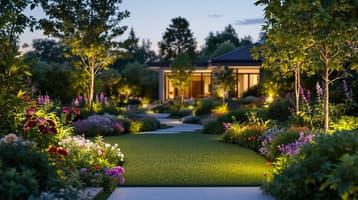
Ultimate Guide to Smart Garden Lighting Setup
Learn how to enhance your outdoor space with smart garden lighting through effective planning, installation, and automation techniques.
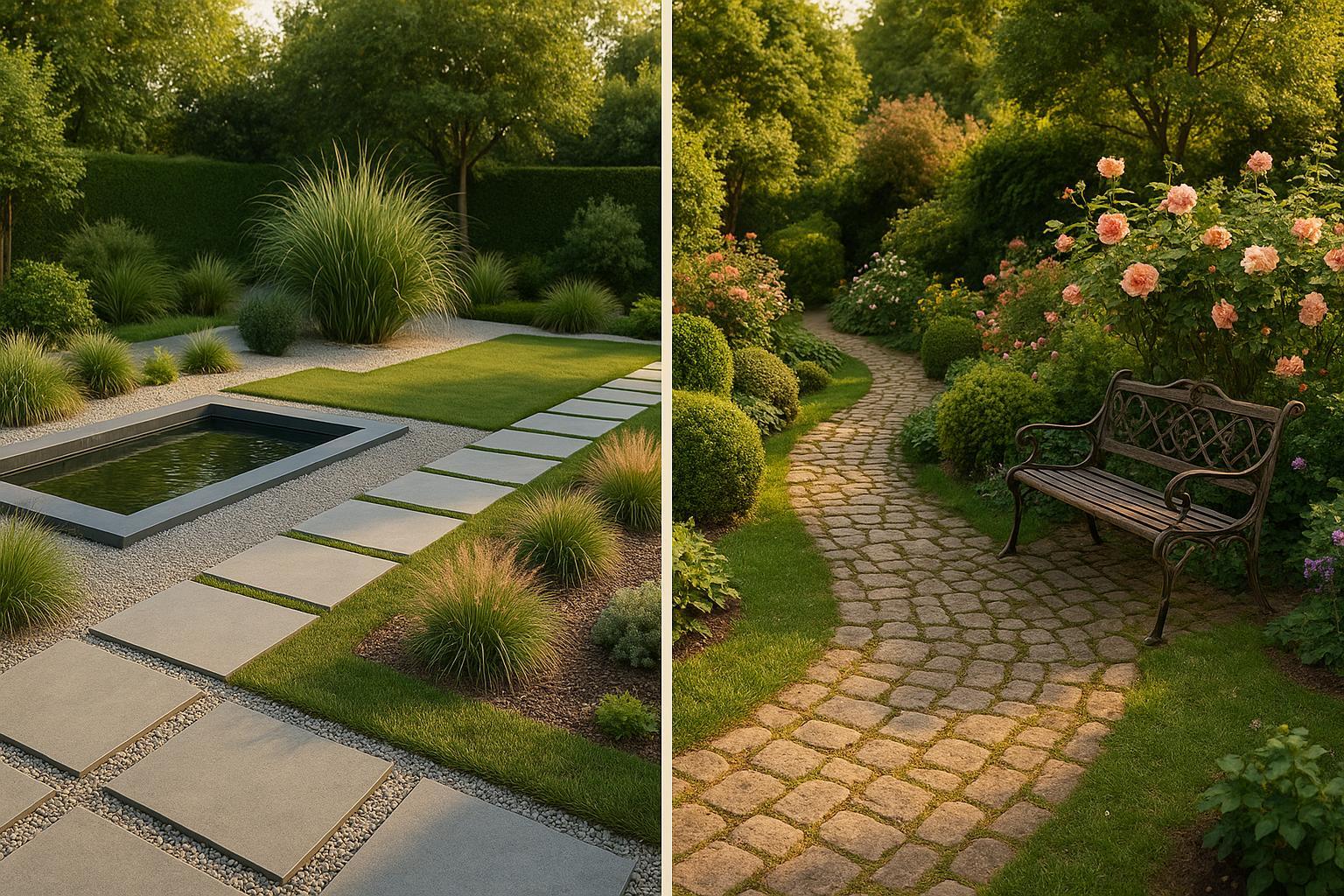
Modern vs. Classic Garden Themes: AI Design Tips
Explore the differences between modern and classic garden styles with AI design tools that simplify planning and plant selection.

Plants in Zen Gardens: Symbolic Roles
Explore the symbolic meanings of plants in Zen gardens, highlighting their roles in promoting mindfulness, harmony, and a connection to nature.
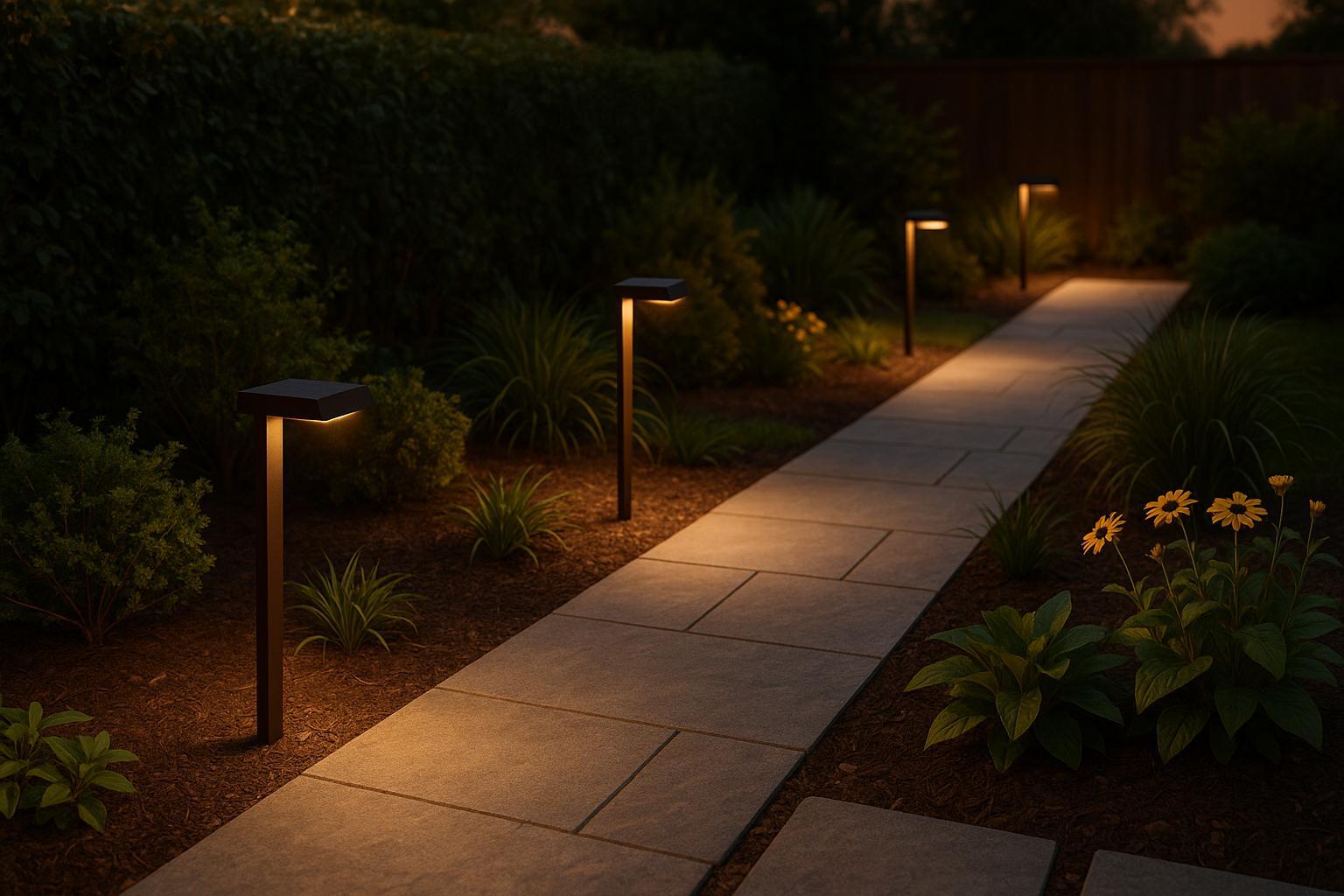
Checklist for Weatherproof Low Voltage Lighting Installation
Learn how to effectively install and maintain weatherproof low voltage lighting for your outdoor space with this comprehensive guide.
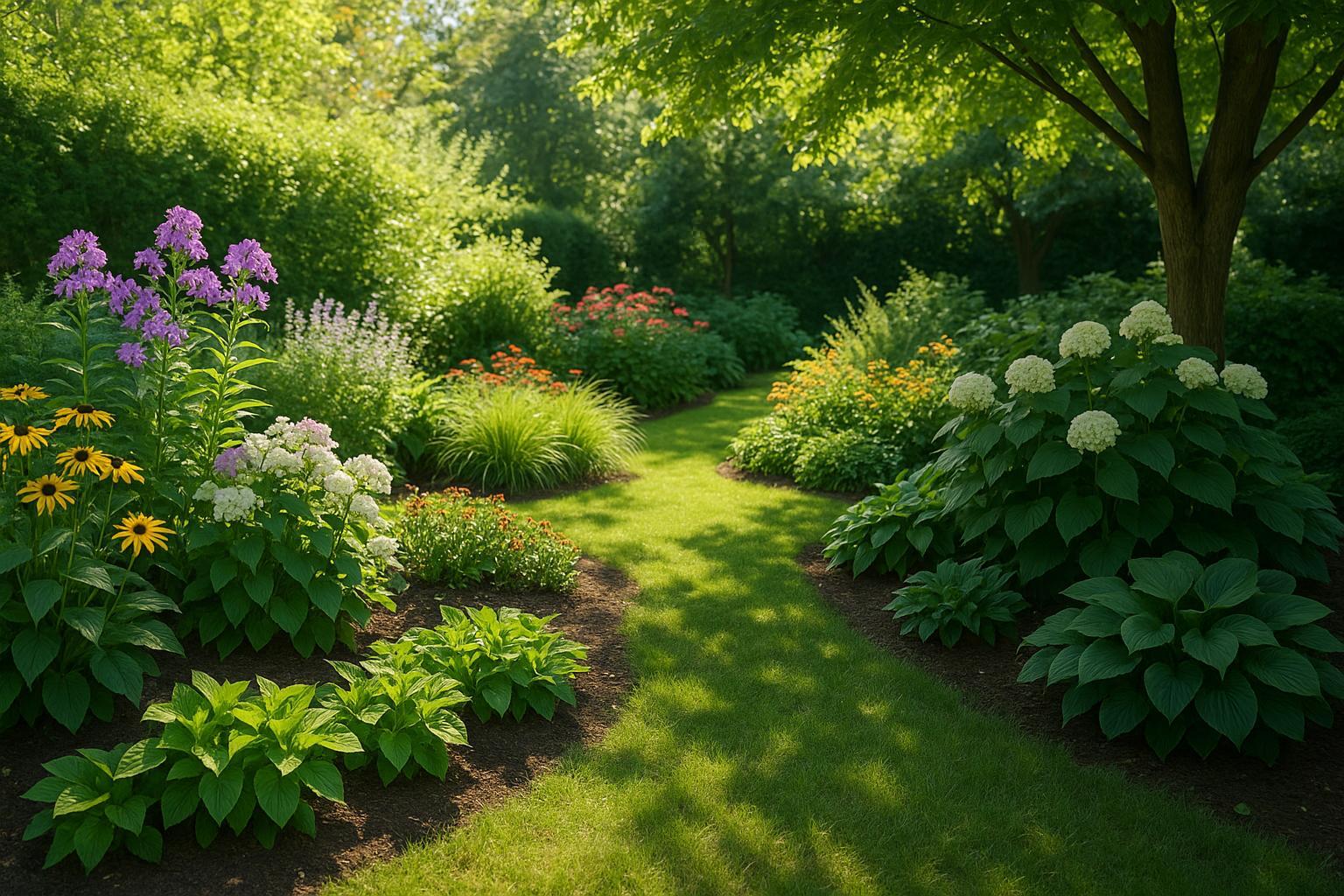
AI Tools for Managing Sun and Shade in Gardens
Explore how AI tools enhance garden management by optimizing sunlight and shade for healthier plants and better yields.
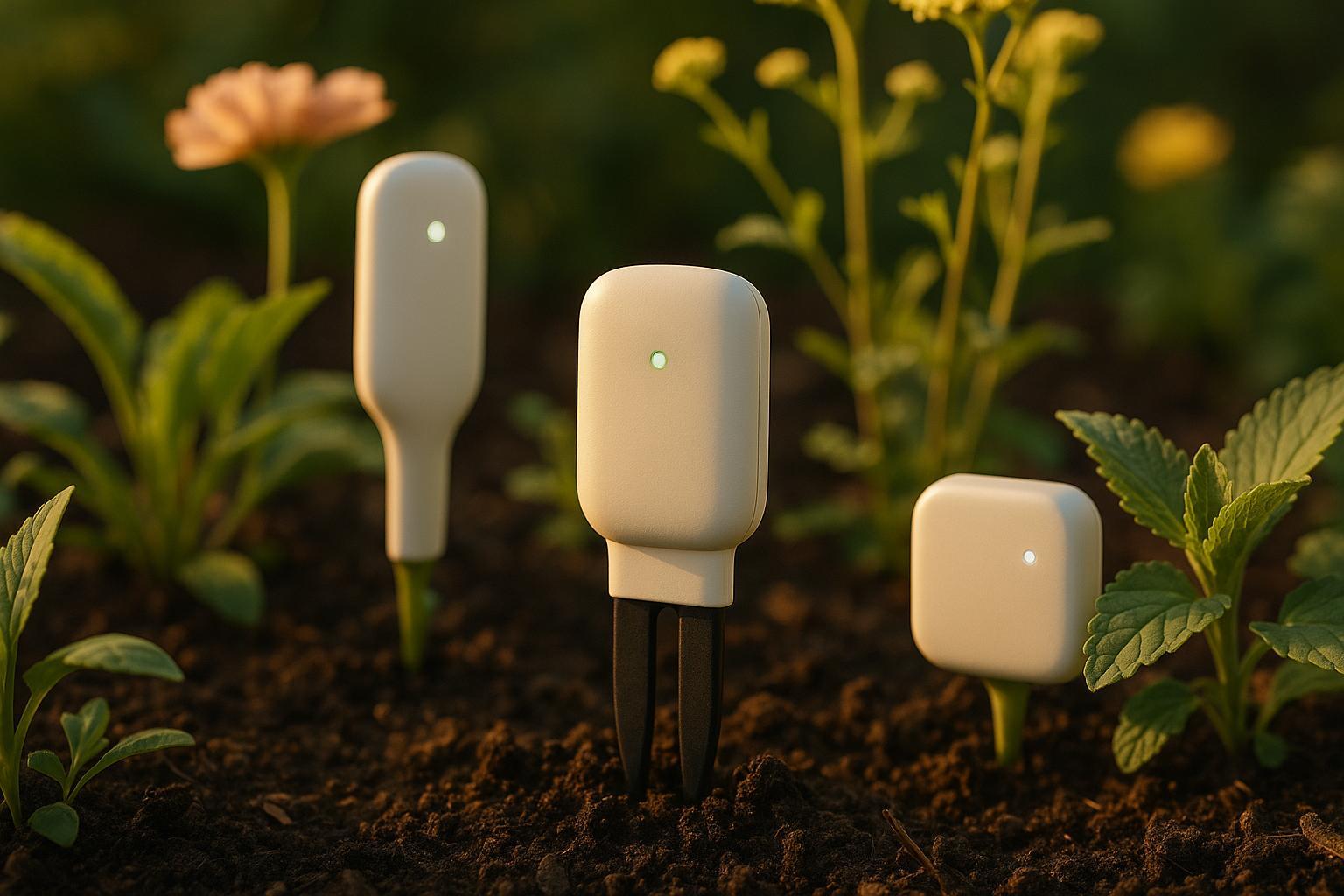
Top 5 Data Compression Methods for IoT Sensors
Explore the top five data compression methods for IoT sensors in garden monitoring systems, enhancing efficiency, performance, and energy savings.